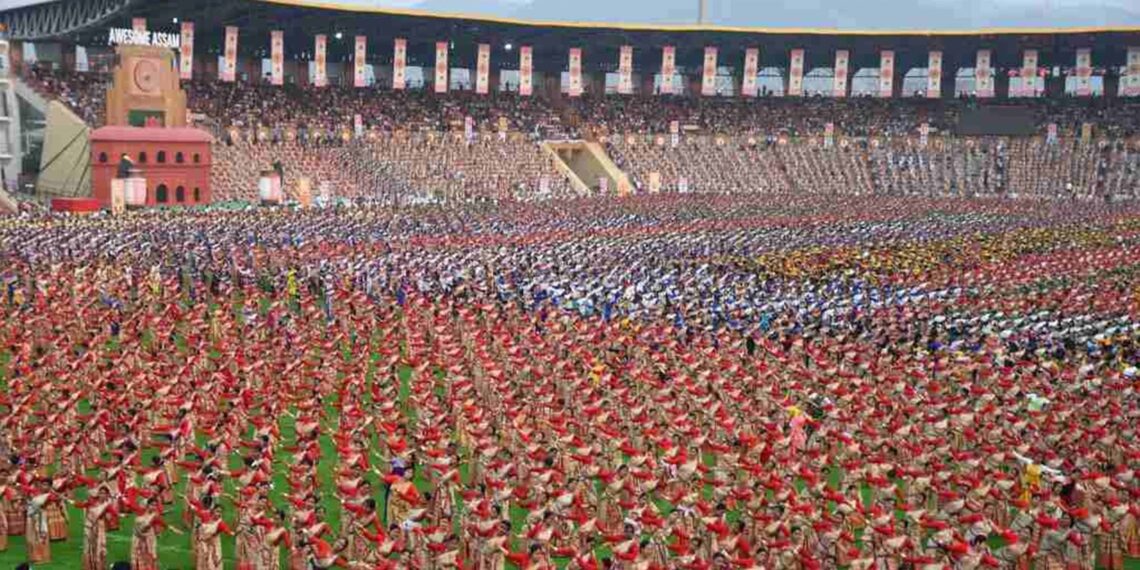GUWAHATI: The Assam government paid a total of Rs 1.67 crore to the Guinness World Records authorities to secure titles for the Largest Bihu Dance Performance and the Largest Performance by Traditional Folk Musicians.
This financial disclosure, revealed by the Assam Electronics Corporation Limited (AMTRON) in response to an RTI application filed by Satra Mukti Sangram Samitee president Devabrata Saikia, has sparked a debate about transparency and financial management.
The breakdown of costs indicates that Rs 59 lakh was allocated for the Bihu dance record, while Rs 23.6 lakh went towards the musician record, a report in a Guwahati-based news portal revealed.
Additionally, consultancy fees for both attempts amounted to Rs 84.2 lakh, raising questions about the necessity and justification for such high consultancy expenses.
ALSO READ PM Modi to witness Assam’s Guinness record attempt during Rongali Bihu in April
Further information from the RTI disclosure reveals that the Assam government spent a total of Rs 53 crore from the state exchequer for the event.
This expenditure included Rs 25,000 provided to each participating dancer and drummer, highlighting the significant financial commitment made to achieve the record.
The record-setting event, held on April 13, 2023, at Guwahati’s Sarusajai Stadium, featured over 11,000 Bihu dancers and drummers.
The initiative, spearheaded by Chief Minister Himanta Biswa Sarma, aimed to showcase Assam’s rich cultural heritage on the world stage by securing a place in the Guinness World Records for the largest Bihu dance performance at a single venue.
While the accomplishment has undoubtedly brought pride to Assam, the substantial expenditure has raised concerns about balancing cultural celebration with responsible financial management.
Critics argue that the high costs associated with securing the records need to be justified and made transparent to ensure that public funds are utilised effectively and efficiently.
The recent disclosures have prompted a broader conversation about the importance of transparency in government spending, especially when it involves significant public funds for cultural events.















